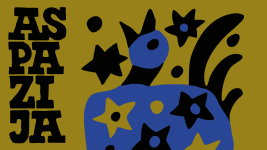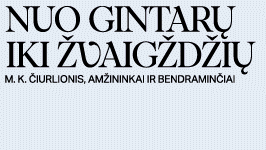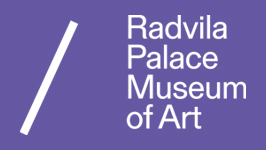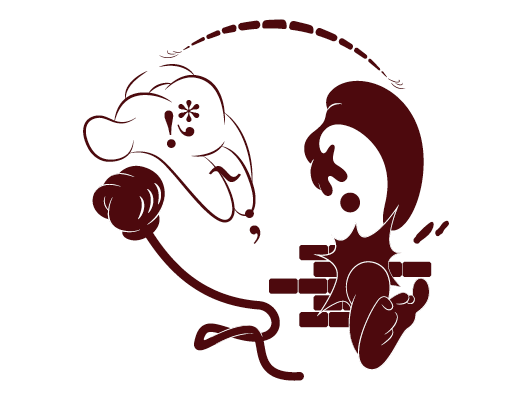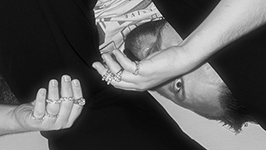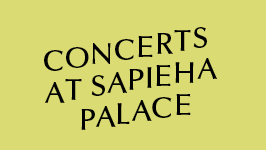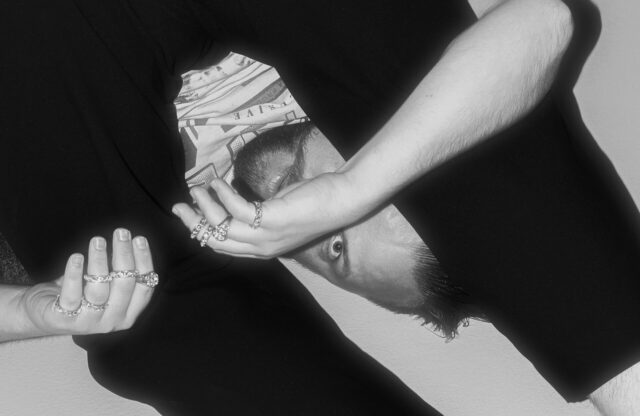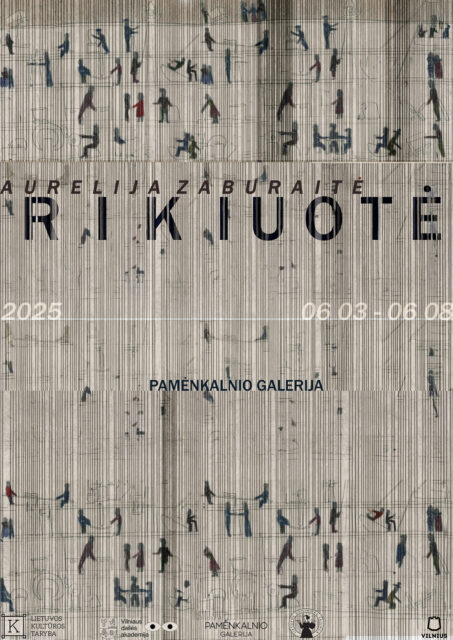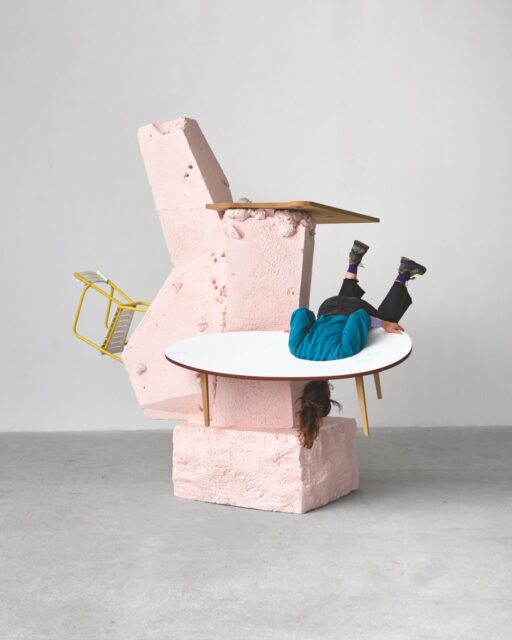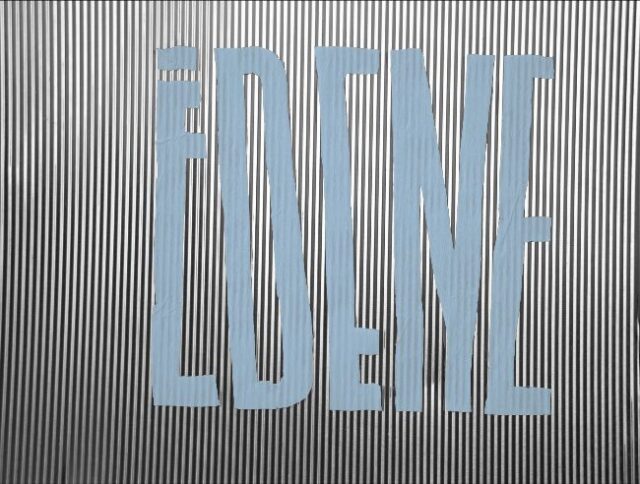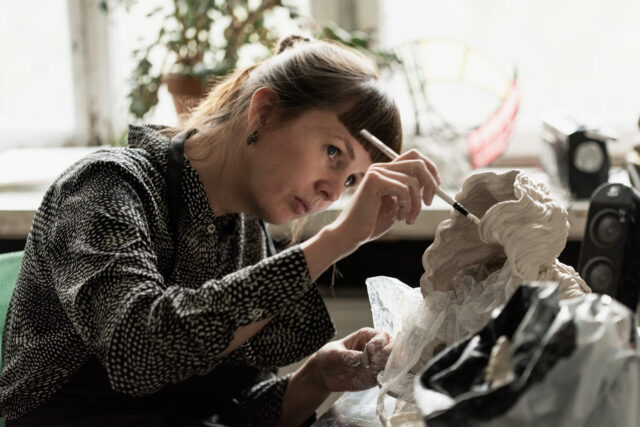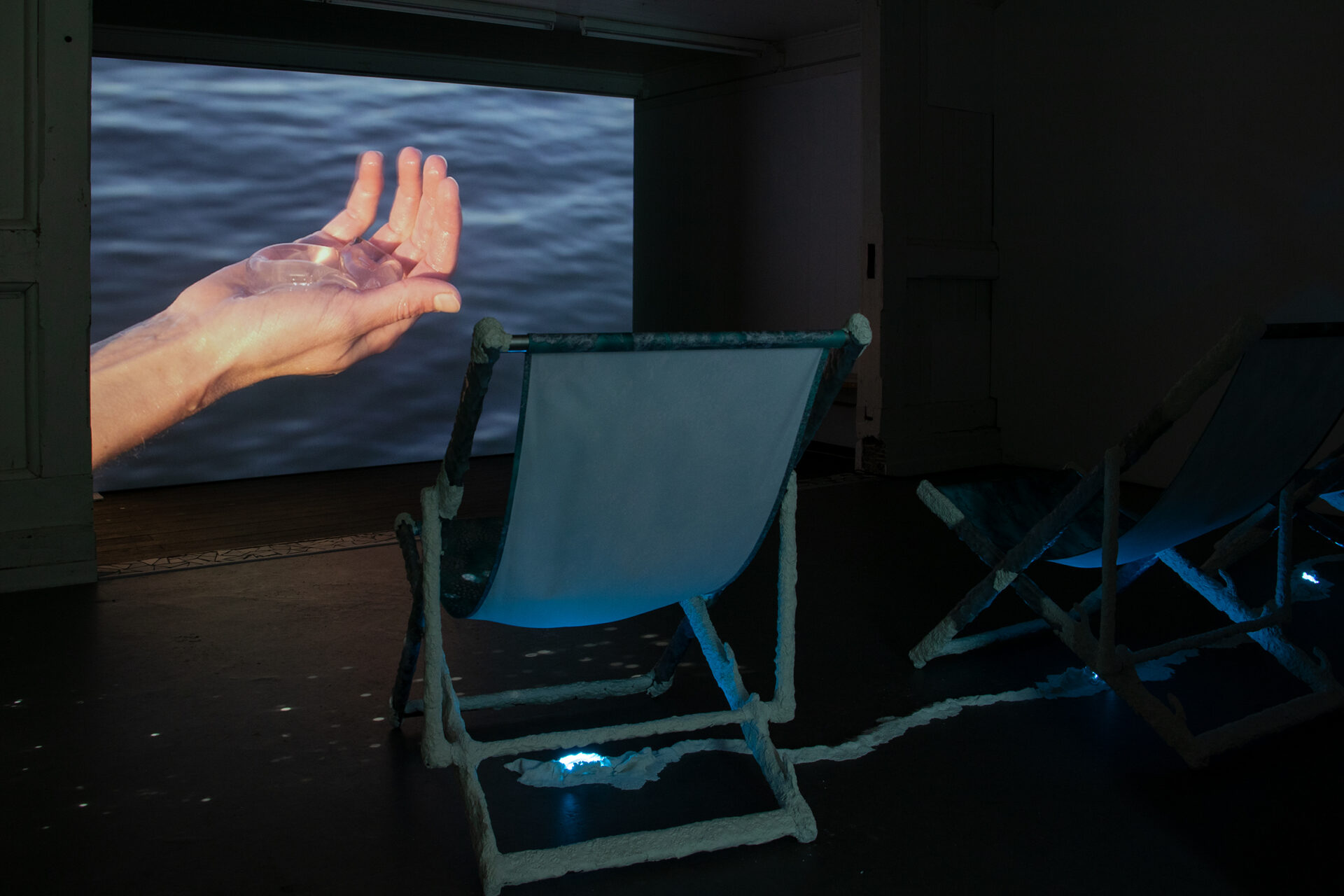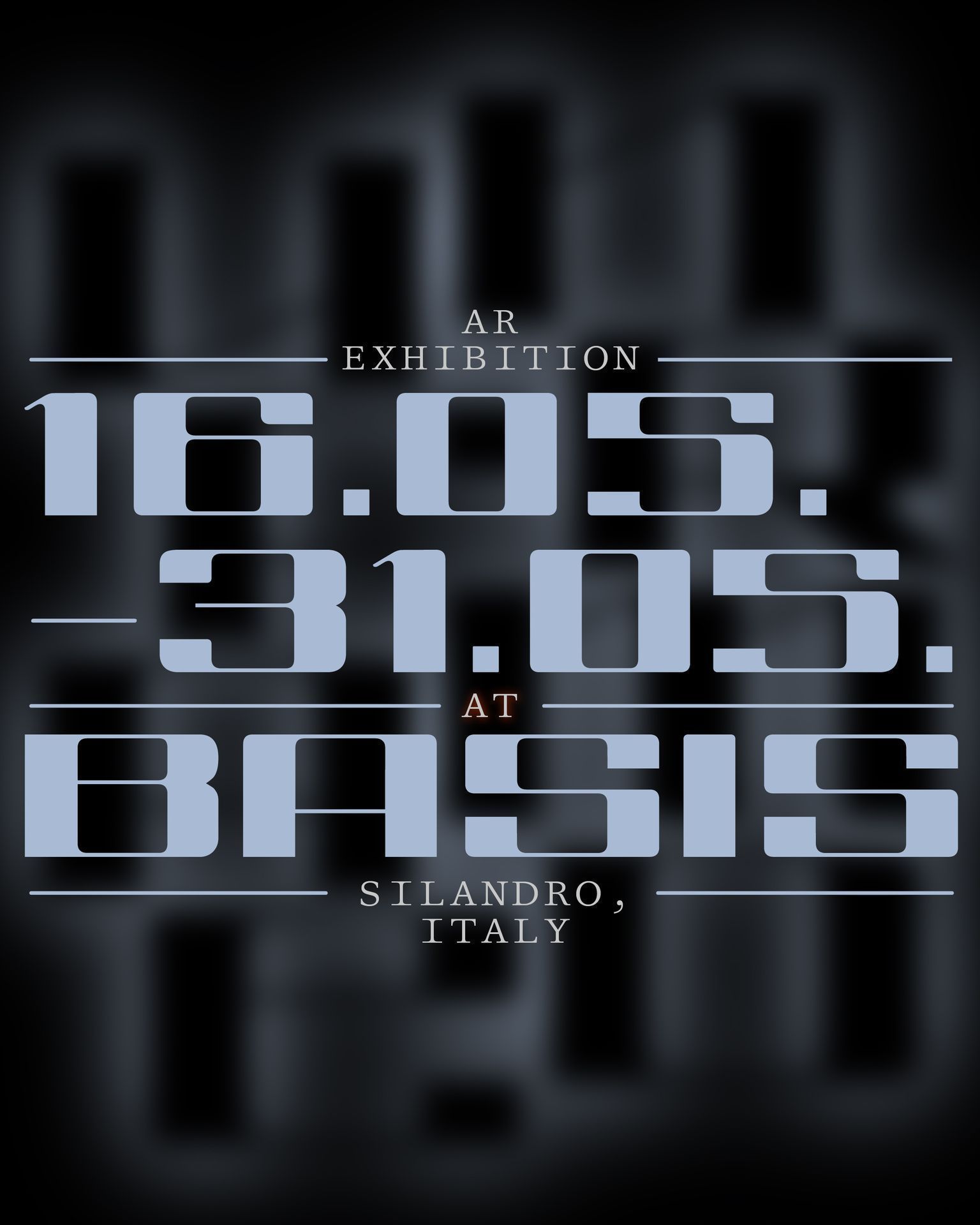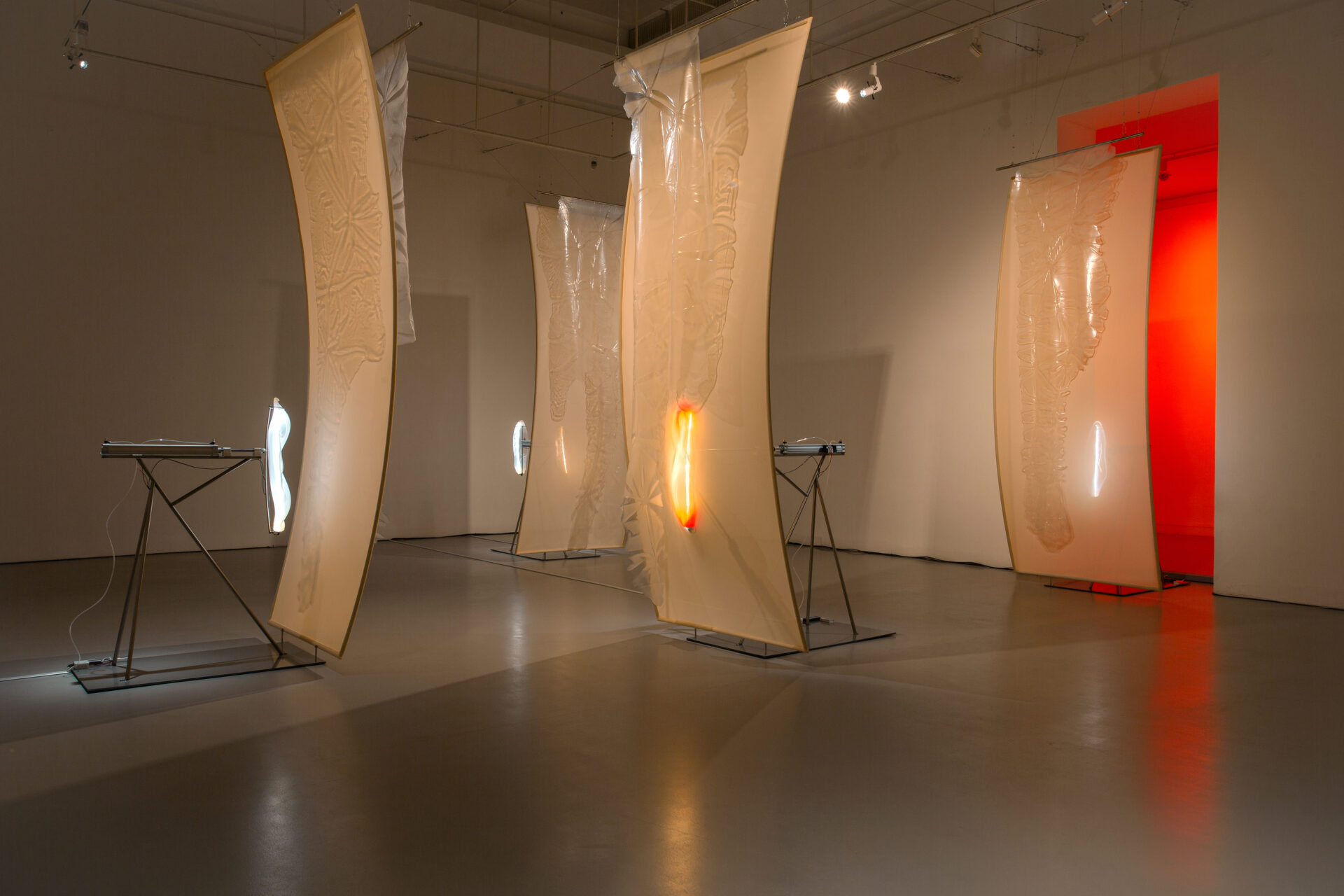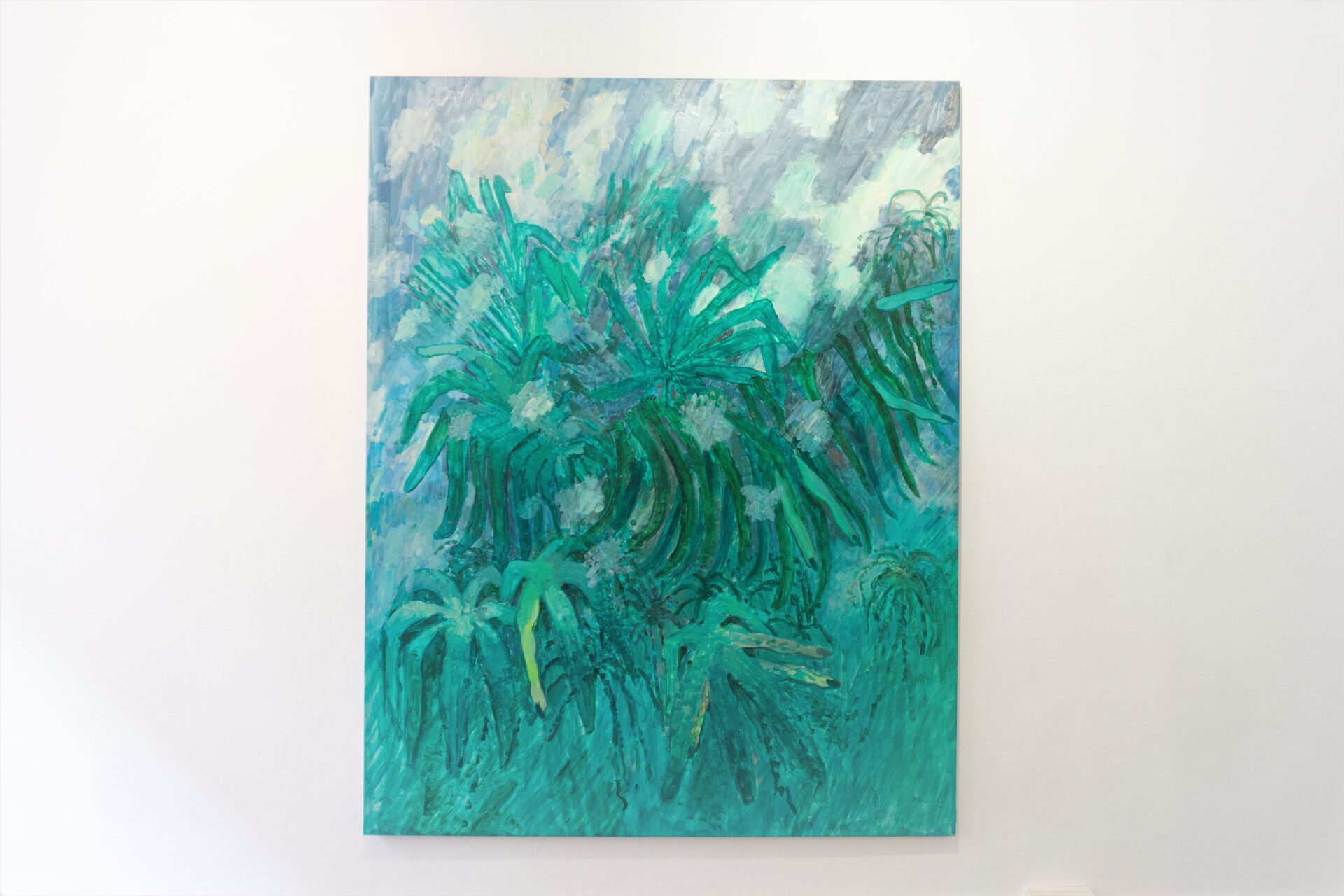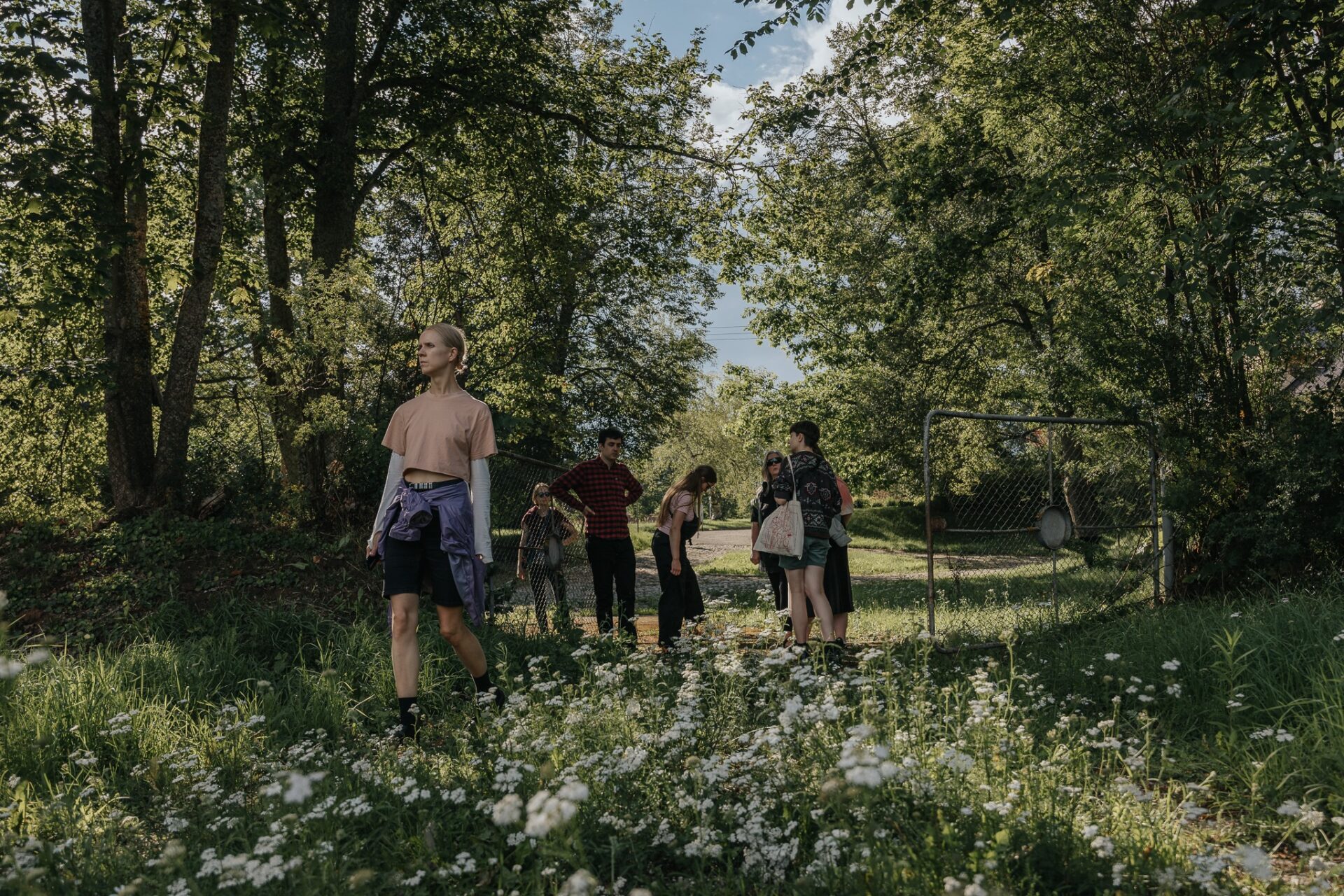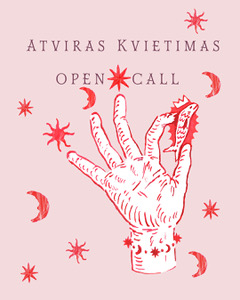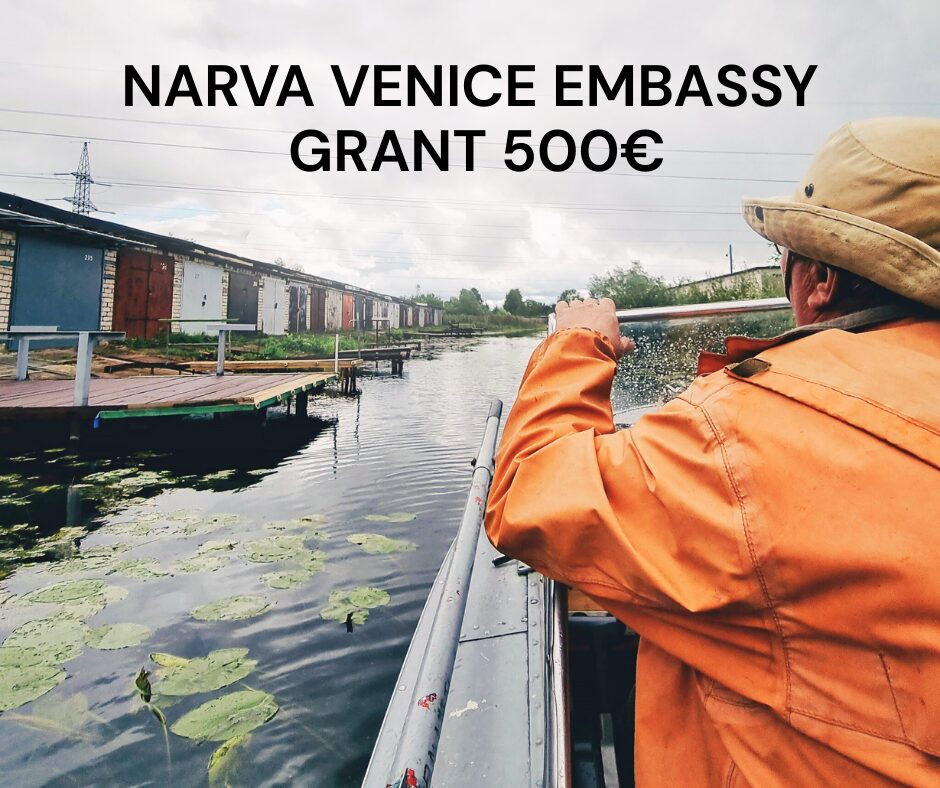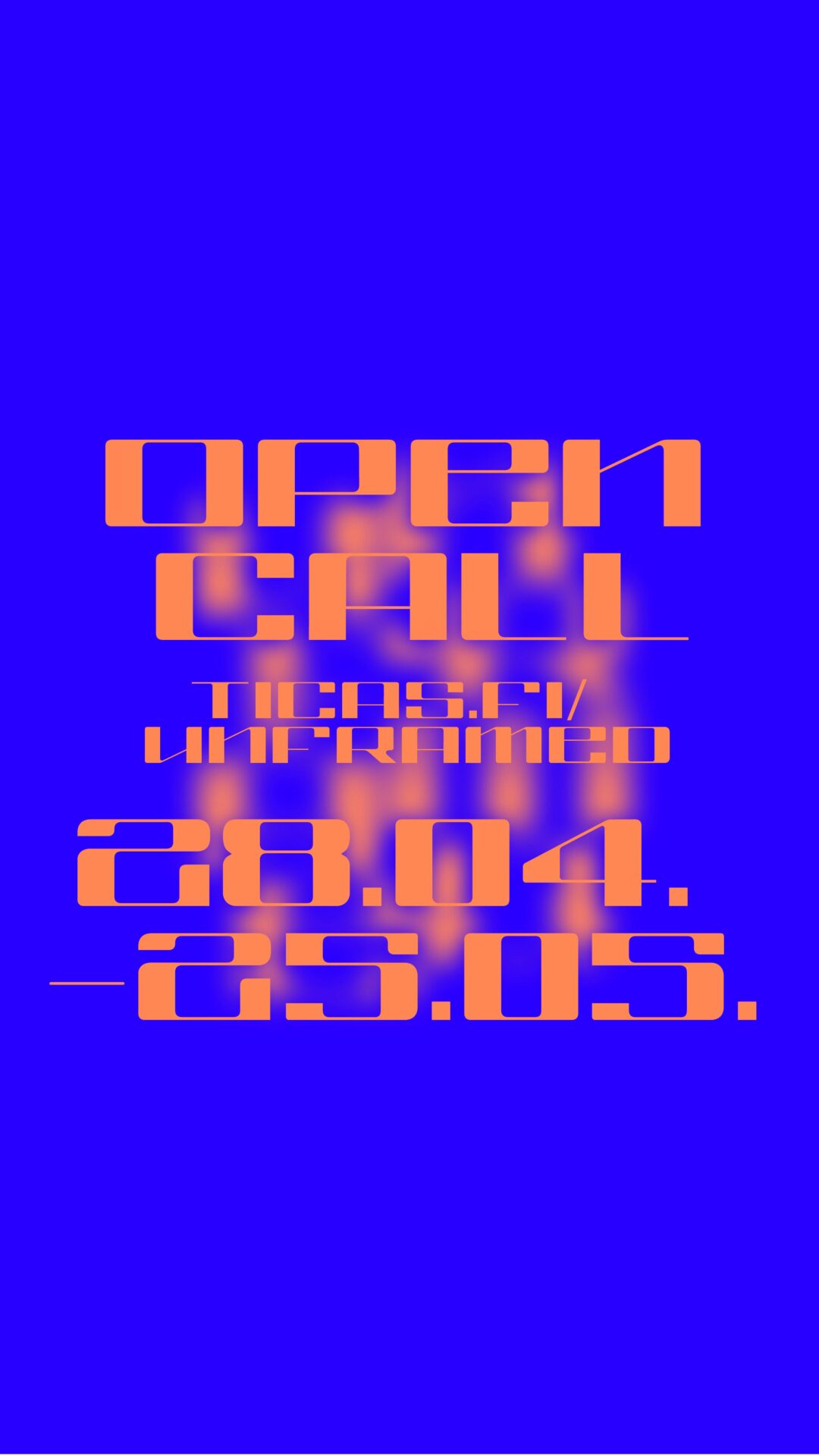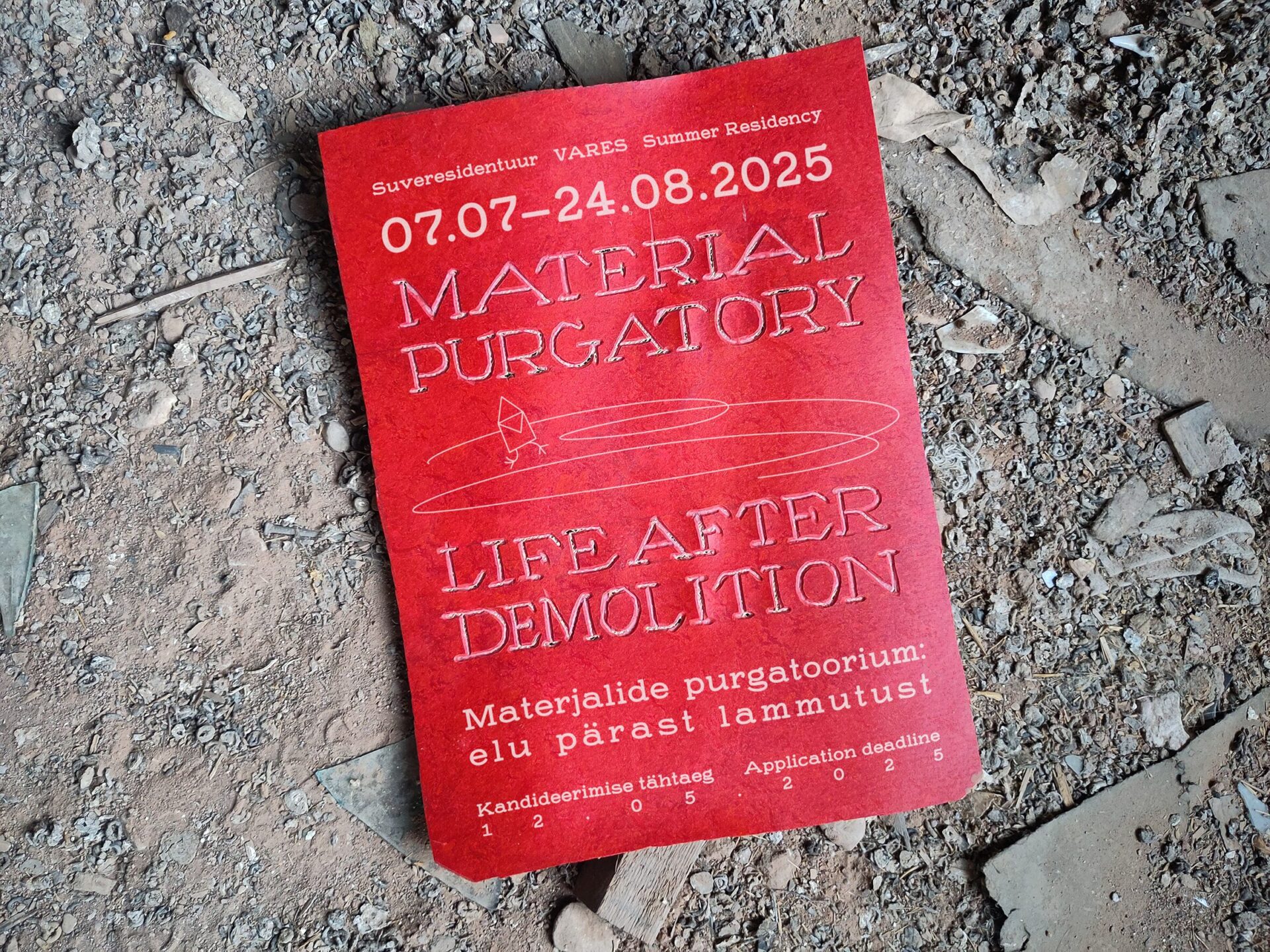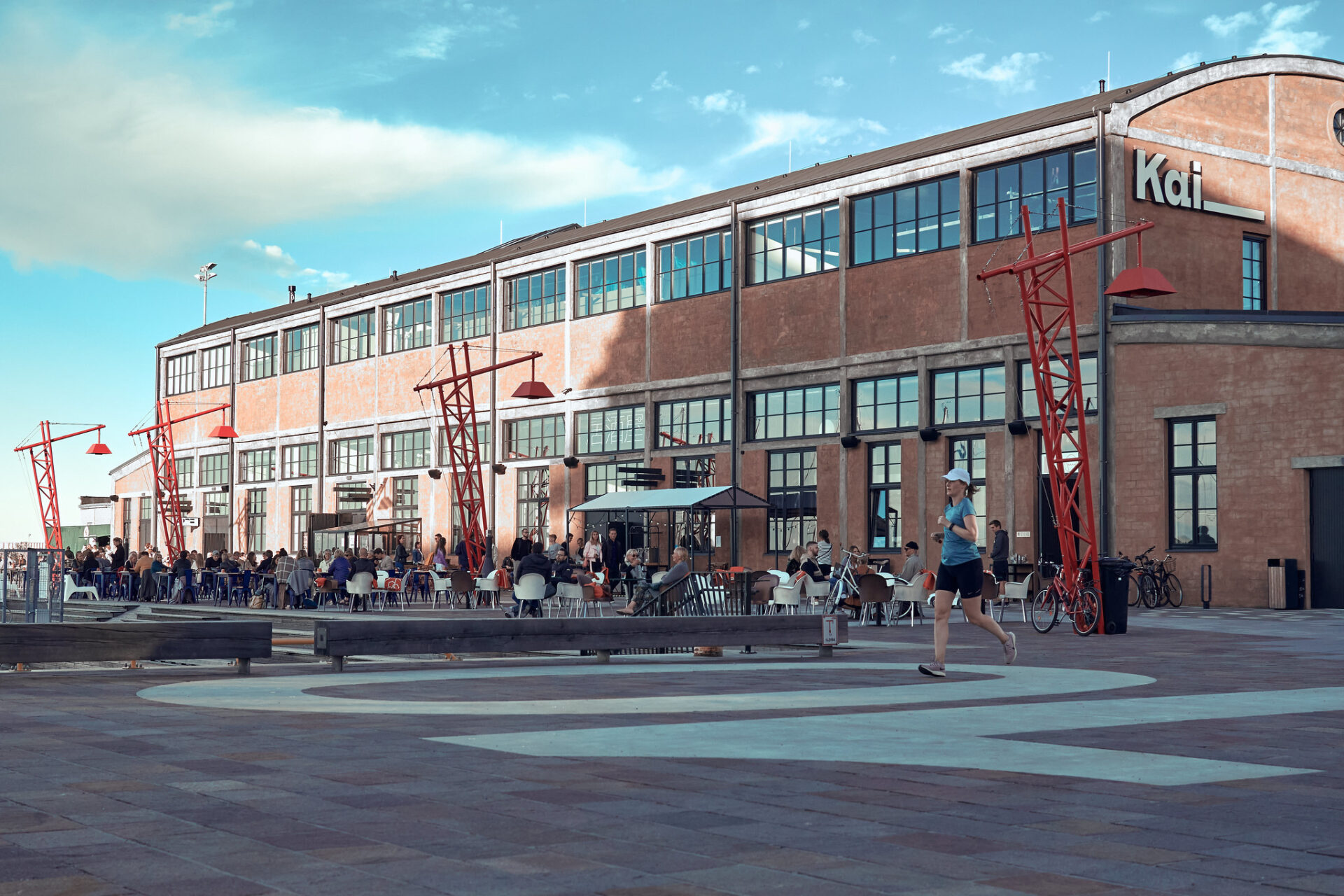Aistė Marija Stankevičiūtė (AMS): ‘Alternating Current’ is your first solo show, created especially for the Contemporary Art Centre. It’s made of two ever-changing parts: a sound installation and events in the North Hall.
I would like to start our conversation with the suspended roof hanging in the blue light, resembling a bird feeder by its shape. While I was walking around it on the airplane runway marked on the North Hall floor, I remembered the quiet sky left to the sparrows for several months this year. How did the roof structure come about? What were you thinking about when creating its form?
Jurgis Paškevičius (JP): On one hand, the curves and corners of the roof were influenced by the ‘building material’ I discovered, the temporary CAC walls, which, as an element of the interior, reflected the general architectural proportions and stories of the building. On the other hand, the ‘hanging roof’ came along with other parts of the project as a combined emotion. Weightlessness and a gaze with a raised head, potential unity and a gentle threat, interior and exterior.
I was fascinated by the spatial solutions in Japanese culture, and especially the hanging roofs in the Sumo arenas, which originate in Shinto shrines. In their cultural evolution, these temples were separated from the supporting columns that held them, and in the Sumo tradition the roof became levitating. I am fascinated by the idea of multifunctionality, which connects different times and their currents.
So the function finds a form, maybe like the viewer confronts the levitating pose. And at the same time, I keep thinking that maybe this scenography evokes a feeling of being under ice(?).
 AMS: It is interesting to think about the meanings you give to the walls of Vladas Ozarinskas: they turn into a temple hanging above the runway; the upliftment that can be felt when you look up at the openwork ceiling, where the cold, icy light plays. Here I remembered Ingold’s thought about birds and humans: flying does not make a bird, but speaking makes us human. How important are stories to you in the description of the exhibition and in the CAC’s North Hall?
AMS: It is interesting to think about the meanings you give to the walls of Vladas Ozarinskas: they turn into a temple hanging above the runway; the upliftment that can be felt when you look up at the openwork ceiling, where the cold, icy light plays. Here I remembered Ingold’s thought about birds and humans: flying does not make a bird, but speaking makes us human. How important are stories to you in the description of the exhibition and in the CAC’s North Hall?
JP: I thought a lot about the text, and I thought in text. I tried to keep the text informative and accelerating. So I sought a personal, lively, focused narrative that would encourage movement. Meanwhile, writing practice is a really important process, with therapeutic qualities; however, I was not going to tell a story for the story itself. For me, multilayering is important, and how a work can evoke the potential to spread to different contexts, and it is crucial to bear in mind that everything is connected.
AMS: You described the exhibition as a fusion of the mythologies of ‘white cube’, ‘black box’ and ‘dance hall’, coated in a layer of invisible workshop dust. Can you tell me more about this?
JP: I tried to say a lot in one sentence (smiles). However, the hanging roof in the North Hall reflects the following practices:
- This work incorporates the parameters of the existence of an art institution and communicates its qualities.
- The work and the atmosphere have an effect found in the theatre environment.
- The exhibition’s ability to hold sound events or the transformation of the auditorium into a stage generates the potential for new social trajectories. Maybe the hanging roof will one day become a music/dance floor in a public space?
- I had a special time: the CAC’s North Hall turned into my personal studio for several months during the lockdown. Everything was designed and executed by my own merit, with the priceless care of my skilful friends; and new practices call us to step into further knowledge of the world.
AMS: I have no doubt that the hanging roof would find a place above any noisy street in Vilnius. Especially, if you think of it as a feeder or an object that makes you feel like you’re under the ice. Are you planning to fulfil this?
JP: I very much hope that this period and these circumstances will have a positive effect on culture. I really want to bring the music to light. I think maybe this is an opportunity to listen to music with choreography full of the energy of the day and the undisturbed rhythm of sleep. The public city park: green, sunny, and the accessible music and dance scene without walls. I would very much like this to be an ordinary phenomenon in our culture.
AMS: It would be interesting to find out about the exhibition before its opening: how have your thoughts and ideas changed in collaboration with the curator and other team members? How important to you is co-authorship?
JP: The opening of the exhibition has been postponed several times; and the closed time of the pandemic, in general, I think, was more efficient than quantitatively productive. We didn’t think of anything particularly new during the extra time, but instead we fully articulated to ourselves what we wanted to communicate: we had time to try, and it was a very valuable period. Teamwork also produces many challenges, often failures, divorces. I really enjoy working in a group; it’s very important to exchange things, and this transaction is probably one of the most valuable things that stays after a project. Co-authorship, on the other hand, I think, is a very good description of the global period we’re in: the pandemic is co-authorship. Planetary-scale empathy, where more or less every corner can feel and empathise with another, because everyone has similar experiences at the same time. In general, our world is co-authorship.
AMS: On one hand, you are talking about imperceptible and changing, sensitive things: the uplifting feeling and body choreographies induced by the rhythms of music, the flights, the sensitivity and empathy of the world, about the mystical Jupiter in the text. On the other hand, the structure hanging in the North Hall is monumental: although suspended in the air, it looks heavy and menacing. What are your thoughts on this?
JP: I think I didn’t make it clear to myself at the beginning of the project, but now that I have retreated, I see this project as a kind of dedication to the CAC.
AMS: You compared co-authorship to metabolism: when it stops, the body dies. What skills did you need to maintain this circulation? You graduated from Vilnius Academy of Art with a degree in photography and media arts. You mix your activities with cinema, theatre, sculpture and many other media. How did this multi-layered background affect your structure? What influenced your decisions the most? I’m curious about the behind-the-scenes of your work. What are your thoughts revolving around now?
JP: I have recently been interested in ferrous metal processing technology and practising the TIG welding process. I intend to continue and expand this field. In general, production processes are currently a source of inspiration, parallel to music. In retrospect, there have often been situations where we ‘built’ something with friends, for people to come together for both individual and collective experience. There were times when I ‘took’, I’m glad I can now ‘give’. For the moment mentioned, when the hanging roof turns into a stage during the event, I invited two sound artists, whose stage names are Underground and Stream, to participate in the second listening session. These artists met for the first time during the preparation for the event. Stream looked at Dungeon and said: ‘Experience and energy.’ For me, it was a beautiful moment that seems to have turned into a day-long event with a lot of smiling faces around.



